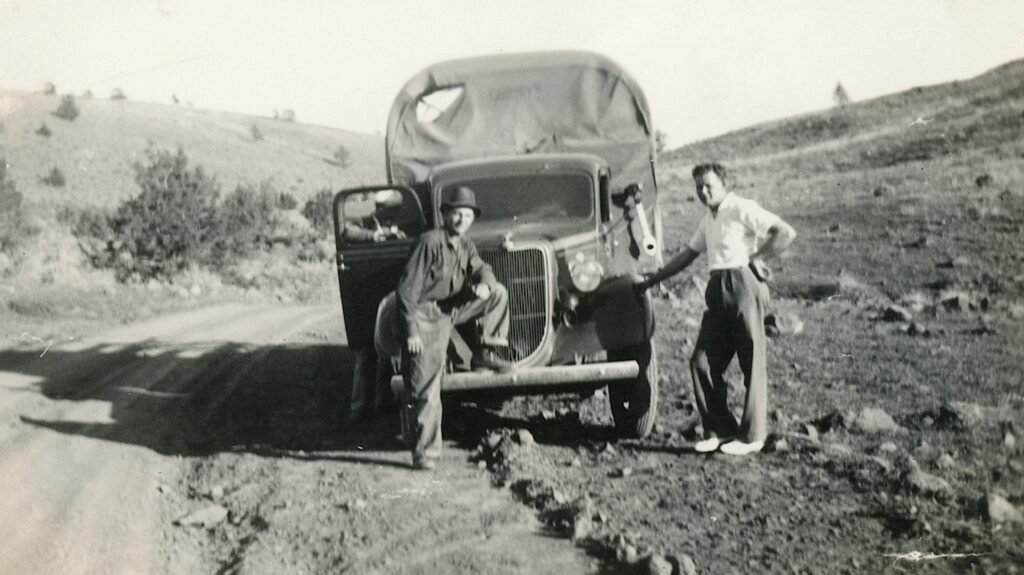
Today, this road is best known as the gateway to High Desert State Prison. In an earlier time it was the easiest route heading north out of the Honey Lake Valley. As a matter of fact, several proposed railroad companies surveyed a rail line through the canyon. In the early 1920s, when the Bly Tunnel was under construction at Eagle Lake, it was the preferred route of teamsters to haul equipment and supplies to that site.
In 1919, Lassen County requested aid from the Bureau of Public Roads to assist with the planning of county road system. The Bureau obliged and sent their Senior Highway Engineer, J.T. Schuyler to Lassen County to make an inspection.
Schuyler noted the county had 800 miles of roads, though less than half of that were maintained. In addition, the county’s road budget consisted of $49,000. The majority of those funds, $30,000 was from a special tax levied on the lumber mills. Approximately $23,000 was spent each year for road maintenance. Thus, $25,000 was available annually for road construction. This sum of money would not suffice for what he had planned for the county.
It was Schuyler’s opinion the most important road to be constructed was Susanville to Bieber. His proposed route eliminated Antelope Grade in favor of Rice Canyon, and the other major change was to bypass Hayden Hill. He estimated the total cost at $300,000, which there was bond money available. The bonds could be repaid over a period of 24 years.
Schuyler’s plan was shelved, but there was the nagging issue for a decent road to connect Susanville and Big Valley. The residents of Big Valley, and their County Supervisor Pete Gerig, played a major role in getting a north/south highway constructed. On December 21, 1929, the Lassen-Modoc Joint Highway District No. 14 was created. Their purpose was to build a 134 mile highway from Susanville to the Oregon border, near Malin. The cost was estimated at $2,499,516.99.

The initial work focused from Willow Creek Valley north to Big Valley. One significant change from Schuyler’s original proposal was the elimination of Rice Canyon and re-route the highway over Antelope Grade. It was the general consensus the road should come directly into Susanville. However, the current Antelope grade had a maximum grade of twenty-two percent and a new route would have to be redesigned. In fall of 1934, Susanville engineer, Martin Tilley did a preliminary survey for a new grade. In December 1934, State Highway Engineer, T.A. Bedford, paid Susanville a visit to inspect Tilley’s survey. The new route was much higher on the mountain, and a mile longer in length. More importantly, the grade was reduced to six percent.
Due to the lack of funding, it was not until the fall of 1947 when worked focused on transforming Antelope Grade into the roadway that travelers are familiar with, thus diverting traffic from Rice Canyon.